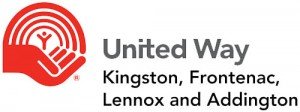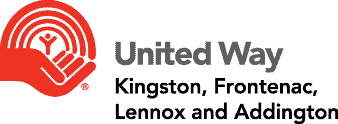2021 Kingston Point-in-Time Count Report
On April 14, 2021, United Way KFLA, through a grant from Employment and Social Development Canada’s Reaching Home: Canada’s Homelessness Strategy (RH), conducted a coordinated Point in Time (PiT) Homeless Count in urban Kingston as part of the nationally coordinated PiT count.
You can read the 2021 Kingston Point-in-Time Count Report conducted by the United Way KFL&A.
A Point-In-Time (PiT) Homeless Count is a snapshot of individuals and families experiencing homelessness that collects numerical and basic demographical information at a single point in time. Having the PiT Count helps Kingston better align resources towards achieving our long-term goal of ending homelessness, and contributes to better understanding any progress being made in communities across the country to end homelessness.
In 2021, while the COVID-19 pandemic was still present, a modified process was used for the Kingston PiT Count. Shelter occupancy totals were obtained from a centralized shelter database. Surveys were administered at shelters and transitional housing units by agency staff, data was collected from institutions, and a limited outdoor enumeration and surveys were conducted to obtain demographic and experiential data.
A higher number of people experiencing homelessness were counted during the 2021 Urban Kingston Point in Time Count, compared to 2018. These numbers are comparable to those of the By-Name List, a real-time registry process now being used by the Housing & Homelessness system in Kingston.
Previous Reports
2018 Kingston Point-in-Time Count Results conducted by the United Way KFL&A
2018 Rural Homeless Enumeration conducted by the City of Kingston.
2016 Urban Kingston Point-in-Time Count Report
PiT Count Frequently Asked Questions
What is a Point in Time (PiT) Count?
Essentially, a PiT Count is a census of people who are homeless at the time of the Count. There are three components:
- Outdoor “street” survey – conducted by volunteers encountering homeless persons in pre-mapped areas of the City.
- Indoor “shelter” survey – conducted by shelter staff and corroborated with shelter stay statistics.
- No Fixed Address “NFA” data – collected from detox facilities, emergency rooms, overnight lock-up, and other institutional locations where homeless persons may be found on the night of the Count.
As well as counting people who are homeless, a brief anonymous survey will be conducted to provide a snapshot of homelessness in the community with information about characteristics such as age, gender, Veteran status, Aboriginal identity. Additionally, United Way staff will oversee the gathering of these statistics from health and correctional centres, VAW (violence against women) shelters, and from outdoor areas that are inaccessible.
What else?
PiT Counts are conducted across North America and are one of the few ways to get reliable data about the scope of homelessness in a region. Locally, the PiT count will focus on the urban area of Kingston.
Why are we doing this?
Kingston conducted its first PiT Count in October, 2013. Since 2016 Kingston has been part of the nationally coordinated PiT count that takes place in many communities across Canada.
Local results of the PiT Count provide a profile or “snapshot” of homelessness in Kingston and the ability to compare against our metrics and results. This data and information will be used to identify what services people are using, help us to better understand the pathways into homelessness, assist with allocating resources to prevent homelessness and with meeting the needs of people who are experiencing homelessness. The statistics gathered will allow us to measure how Kingston is doing in terms of ending homelessness in our City, and compare our progress provincially and nationally.
How will the PiT Count be done?
Usually, trained volunteers are assigned an area to walk in teams. They introduce themselves to all persons encountered and ask them if they are homeless. If the person is homeless and wishes to participate in a brief survey, the volunteer helps them to complete the survey. Special teams will be deployed to areas where there is a higher safety risk, such as poorly illuminated parks and trails; however, the process will be the same. Everyone who completes a survey receives a “thank you” gift.
All volunteers are given, and must follow, instructions on how to conduct the survey so that the results are statistically valid. Instructions are provided during the training on the night of the count for those who have pre-registered as a volunteer.
Shelter-count information on the night is gathered from emergency shelters, transitional housing, and from Kingston’s Provincially-funded violence against women (VAW) shelter.
On the night of the count, emergency rooms, detox centres, and the police are contacted to obtain an estimate of the number of people staying in Kingston health and custody centres overnight who are listed as having “no fixed address.”
During the pandemic, the process was adapted to comply with health and safety restrictions. No volunteers were used; data was collected and surveys were conducted by shelter and agency staff, including street outreach workers.
What is the methodology?
The definition of homelessness for the PiT Count is: any individual found outdoors who does not have a place to stay on the night of the survey; also those staying in emergency shelters, VAW (violence against women) shelters, and in health or correctional facilities with no fixed address.
The PIT Count does not cover “hidden” homeless or “couch surfers.”
For more information about the PiT Count please call 613-542-2674
program@unitedwaykfla.ca
Funded in part by the Government of Canada’s Reaching Home Strategy.
The opinions and interpretations in this publication are those of the author and do not
necessarily reflect those of the Government of Canada.








